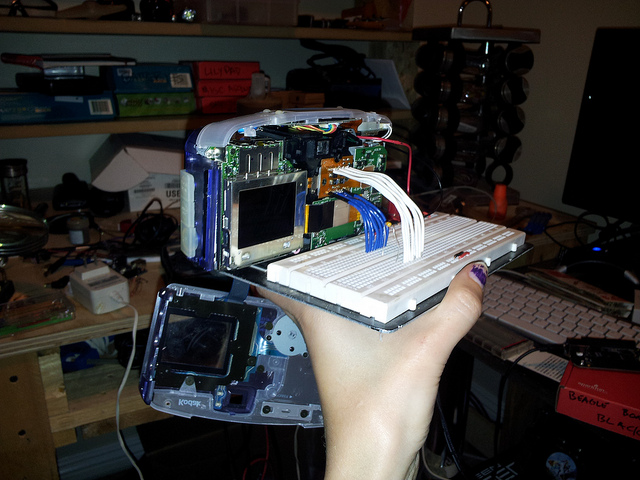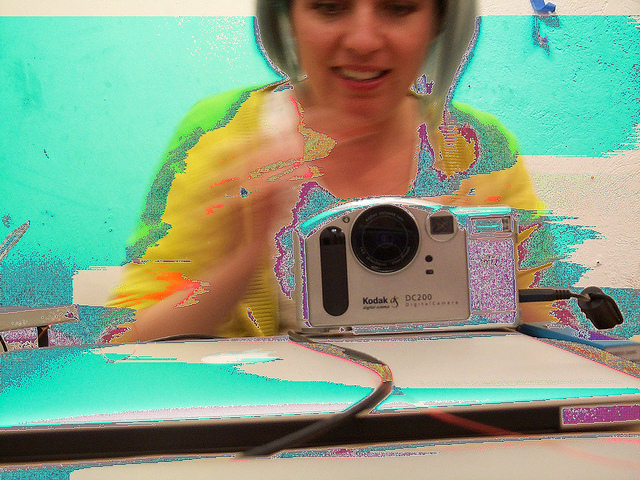Circuit Bending and Glitch Art
I spent this last Sunday with Phillip Stearns at Machine Project, learning how to circuit bend 1990s-era digital cameras for the sake of making glitch art.
This is my camera in it’s current state:

There’s a battery pack for mobile use, but for experimentation I wired the camera to my breadboard and hooked it up to a spare 5V power supply (thanks, eWaste!) to keep it running long-term. (These things kill batteries fast.)
It seems that much of circuit bending for the sake of art is guess and check, as you’re never quite sure what will produce a desirable result. I started out with shorting the board manually as I walked around taking pictures, but found that it was difficult to remember what exactly I had done and how to reproduce it when I went to go look at my pictures later. The addition of the breadboard has helped with this quite a bit (since my wiring stays in place while I move around), and I’ve been gathering data on what connection combinations lead to what effect under what circumstances.
So far, this is my favourite glitchPic I’ve gotten out of this setup:

Model: Rachel Koukal. Eat your heart out, Lisa Frank.
I think it would be fun to hook this up to an arduino and automate the system of stepping through the different short-circuit configurations. This might be less interesting to look at, though, as I’m noticing that weak connections and poor solder joints often produce the most beautiful results. (This is glitch, after all.)
Anyway, you can find the rest of my glitchy photos here on flickr. Once I get a more stable mobile setup, I’m gonna take this outside and see what I can get with some natural light!
[Edit] I got a mention in Year of the Glitch!
